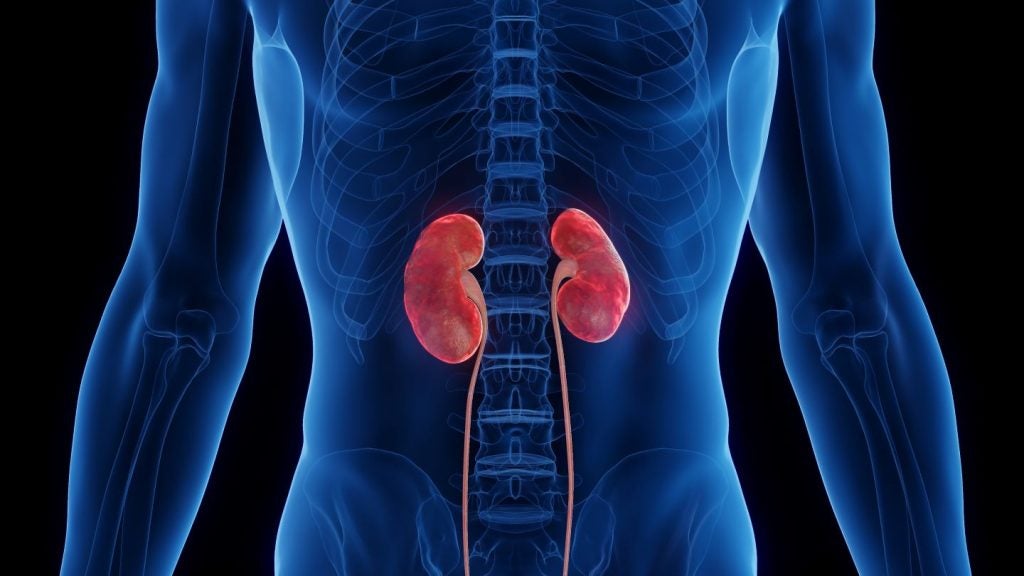
Most companies engaged in clinical research and development utilize Interactive Response Technology, or IRT systems to help manage clinical trials and more specifically, the Investigational Product (IP). In this article, we will explore how to select the right IRT vendor for your specific needs, how to design the IRT to maximize usefulness, how to navigate User Acceptance Testing (UAT), and how to integrate your IRT with Electronic Data Capture (EDC) systems.
General IRT Overview
The systems we refer to today as IRT have been around since the early 1990s. They were originally called Interactive Voice Response Systems, or IVRS. These systems used the touchtone telephone as the primary means for database input from clinical sites and faxes were used as the database output method for information transmission to the sites. With the widespread use of the internet, these systems evolved into web-based technology and the name changed accordingly to Interactive Web Response Systems, or IWRS. With increasingly complex clinical designs, these systems have expanded to include other features and since mid-decade have come to be known collectively as IRT.
As a very basic overview of their function, these systems manage patient randomization and IP supply. When a site screens or randomizes a patient, the site staff enter specific, predetermined patient demographics into the system. If IP dispensing is to occur, the system determines the correct IP to dispense based on the randomization list and the site inventory. The system also can proactively manage IP inventory by generating IP shipment requests to meet current and projected visit schedules.
There are several advantages to using an IRT system and now that the cost and implementation times have been reduced, these systems are widely used for both large and small clinical trials. IP advantages include: automated initial shipments triggered by site activity, automated trigger and resupply levels by sites and depots, tracking and managing expiry and retest dates, immediate recall or do not dispense by lot, automated drug accountability, and real-time reporting.
Another important consideration is who within the sponsor company will have primary responsibility for managing the IRT. This role can be within any of the following: IP group, Data Management, Clinical Operations, or a Clinical Research Organization or other third party. While all these groups should be involved in the selection and design of the IRT, it is important to have a clarity on who is the responsible party for the IRT as this role will drive the selection and implementation.
How well do you really know your competitors?
Access the most comprehensive Company Profiles on the market, powered by GlobalData. Save hours of research. Gain competitive edge.

Thank you!
Your download email will arrive shortly
Not ready to buy yet? Download a free sample
We are confident about the unique quality of our Company Profiles. However, we want you to make the most beneficial decision for your business, so we offer a free sample that you can download by submitting the below form
By GlobalDataEvaluating and Selecting the Right IRT Provider
There are several different types of contract companies that provide IRT services. Each has its specific advantages and disadvantages. The types of vendors can be divided into the following categories:
- Clinical Research Organizations (CROs)
- EDC Companies
- IP Logistics Vendors
- Standalone IRT Vendors
Many large and small CROs offer IRT services, either as a part of their company or through a third party. One of the advantages of working with a CRO for IRT is the CRA and site’s familiarity with the system. Additionally, any integration with a Clinical Trial Management System (CTMS) is made easier or is at least coordinated by the CRO. If the CRO offers or manages the EDC, that integration will also be coordinated by them. For all the pros of working with a CRO, there are critical questions that must be considered by the sponsor: Does the IRT the CRO offers have all the functionality to meet your needs? Will the CRO provide adequate customer service of the IRT as a priority? Lastly, if you utilize multiple CROs, will you have consistency of IRT across all the studies?
EDC companies also frequently offer IRT services. The advantages of working with an EDC company for IRT include the relative ease of integrating EDC to IRT. If you are using the same EDC vendor across your portfolio, you will have consistency with EDC and IRT. However, similar to the CRO model, there are disadvantages namely, the EDC vendor may not have all the functionality the sponsor requires, and they may not provide IRT customer service as a priority.
On the other hand, IP logistics vendors frequently offer IRT services. The advantages of working in this scenario are the straightforward integration with the IP. Furthermore, depot users and the system will likely have good capabilities for handling complex IP resupply algorithms. The disadvantages include the additional time spent on EDC and CTMS integration. Also, you need to be sure that Clinical Operations and Data Management are on board with the choice and that the system provides for their needs. Another possible disadvantage to consider is what would happen if you needed to select a different IP logistics vendor.
Standalone IRT vendors also offer specific advantages and disadvantages. These vendors will have the most experience with IRT systems and they will be able to guide you through the design and implementation process and support UAT and any data integration. They are also likely to provide the best customer service for the IRT as it is their sole product offering. They will also have a good and thorough understanding of IP resupply algorithms. Disadvantages include the need for EDC and CTMS integrations and you will also need to ensure your clinical operations and data management colleagues are comfortable with the selected system capabilities.
Regardless of which type of vendor you choose, make sure the system has the functionality you need. Other factors to consider are price, timelines, whether the vendor supports UAT and provides written test scripts, and also their assistance with EDC and CTMS integrations. Always ask potential vendors for references and call them. You can also leverage your industry contacts to ask them who they use and who they have had positive experiences with.
Designing the IRT to Maximize Usefulness
Once you have selected your IRT vendor, you need to leverage their expertise as you enter the design stage. Set up a kick-off meeting and review with your vendor the Clinical Protocol, paying attention to the following items that will impact the IRT:
- Dosing and visit schedules
- Unscheduled visits and how they will be handled
- Replacement of IP visits
- Scheduled IP resupply visits
- Site inventory trigger and resupply levels
- Predictive resupply algorithms
- Any alerts needed
- Expiry issues with IP
- Temperature / stability issues with IP
- Depots and import issues
- Multiple campaigns or label types planned
- Any ancillary or comparator products that will be needed
You should then discuss with the vendor what their expected timelines are and what items are their responsibility, what items are your responsibility, and what items are shared responsibilities. Ask the vendor to review the format of their User Requirements Specification or URS. This is the document they will prepare to identify exactly what the system will do. You should also discuss with them the User Acceptance Testing or UAT process. More detail on this topic is found further on in this article.
Another area were proactive decisions should be made is on how changes will be made to the live IRT and who will make the changes. Items to consider in this area include the following:
- Do not ship dates
- Do not dispense dates
- Initial shipment quantities
- Trigger levels
- Quantity by “type” of site (i.e. high enrolling vs low enrolling)
- Can you create custom trigger quantities and categories
- Resupply – Same considerations as initial shipment quantities
- Predictive Resupply
User Acceptance Testing (UAT)
UAT is the process where the sponsor company tests the IRT while it is still in development to make sure it performs correctly and as designed. Prior to the testing, test scripts should be written that describe exactly what is to be tested, with step-by-step instructions on how to perform the test and what the expected result should be. Contained within the test scripts are the details about how to log into the system and what test data is already loaded in the system to allow the testing; i.e. test sites and users, patients, and drug to be shipped and dispensed.
There is some varying opinion about who should write the test scripts. Test scripts are typically written by either the sponsor, the IRT vendor or a consultant. While there are advantages and disadvantages to all these choices, my opinion is that whenever possible, the IRT vendor should write the test scripts in consultation with the sponsor. This will streamline the process as the IRT vendor is the expert on the system and can provide the best details on the step-by-step process for testing. Also, the vendor will need to load the test sites, patients and drug prior to testing and this should be documented in the UAT script. Any possible bias on the part of the vendor can be eliminated by testing more than is described in the script.
When performing the testing, it is best to get as many members of the study cross-functional team involved as possible. Each person will look at the system differently. It is also ideal if a representative of the vendor company can be on site for the testing as this provides the team with a training opportunity on the system and having a vendor representative on site will allow for on site troubleshooting of any issues.
Documentation of the UAT is done on the scripts. There should be space for each of the tests performed to record the results (pass/fail) and who performed the testing and the date. Documentation should also be attached as verification the testing was performed. Typically, the system generates email confirmations, so those can be printed and attached to the completed script. Screenshots should also be attached where appropriate. Another suggestion is to record ideas for improvement in the system. These do not need to be pass/fail and can be used to improve the system for the next version or for a future study and serves as good feedback for the vendor.
Integrating IRT and EDC
Unless you have selected a vendor that provides both IRT and EDC, you will need to integrate the IRT and EDC databases. Typically this is done as a one-way integration, with data transferring from the IRT to the EDC. The IRT transfers read-only fields in EDC and can also trigger the creation of new forms within the EDC depending on the system’s capabilities. This eliminates the need for duplicate data entry at the site. When setting this up, consider what data will be sent from the IRT to the EDC, how the data will be sent and how frequently and what data will be sent.
- What data will be sent?
- Typically subject, visit and drug data from IRT to EDC
- Subject data: Subject number, Subject demographics
- Visit data: Screening visit date, Enrollment / Randomization visit date, Resupply / drug dispensing visit dates
- Drug data: Assigned drug units,
- Accountability / reconciliation data
- Typically subject, visit and drug data from IRT to EDC
- How data will be sent?
- Two common ways to send data depending on IRT & EDC system’s capabilities
- “Flat” file transfer to secure FTP
- Data format can vary, depending on EDC system, this is not truly real-time, EDC system picks up files on a schedule, Limited error handling or confirmation of successful transfer
- Web-service transaction
- Data typically transferred in Extensible Markup Language (XML), Real-time transaction using IRT calls, More robust error handling and transfer confirmation
- “Flat” file transfer to secure FTP
- Two common ways to send data depending on IRT & EDC system’s capabilities
Once these decisions are made and both systems are prepared for the integration, test files should be sent. This can be documented as part of the UAT. Have the IRT send a test file to EDC, have EDC confirm that data was received and is accurate and use screen shots from IRT and EDC to confirm that the data is the same. If this cannot be done as part of the regular UAT, it can be done as a second abbreviated UAT.
Summary
IRT systems allow sponsor companies to effectively manage complex clinical studies. In this article we have outlined some suggestions for how to select and work effectively with an IRT vendor and ideas for how best to navigate UAT and data integration. Planning for these steps ahead of time and working closely with your vendor and leveraging their expertise will help you to run your clinical trial smoothly.








Related Company Profiles
URS
Intercept Pharmaceuticals Inc
Data Management, Inc.
IRT, Inc.
CRA, INC.